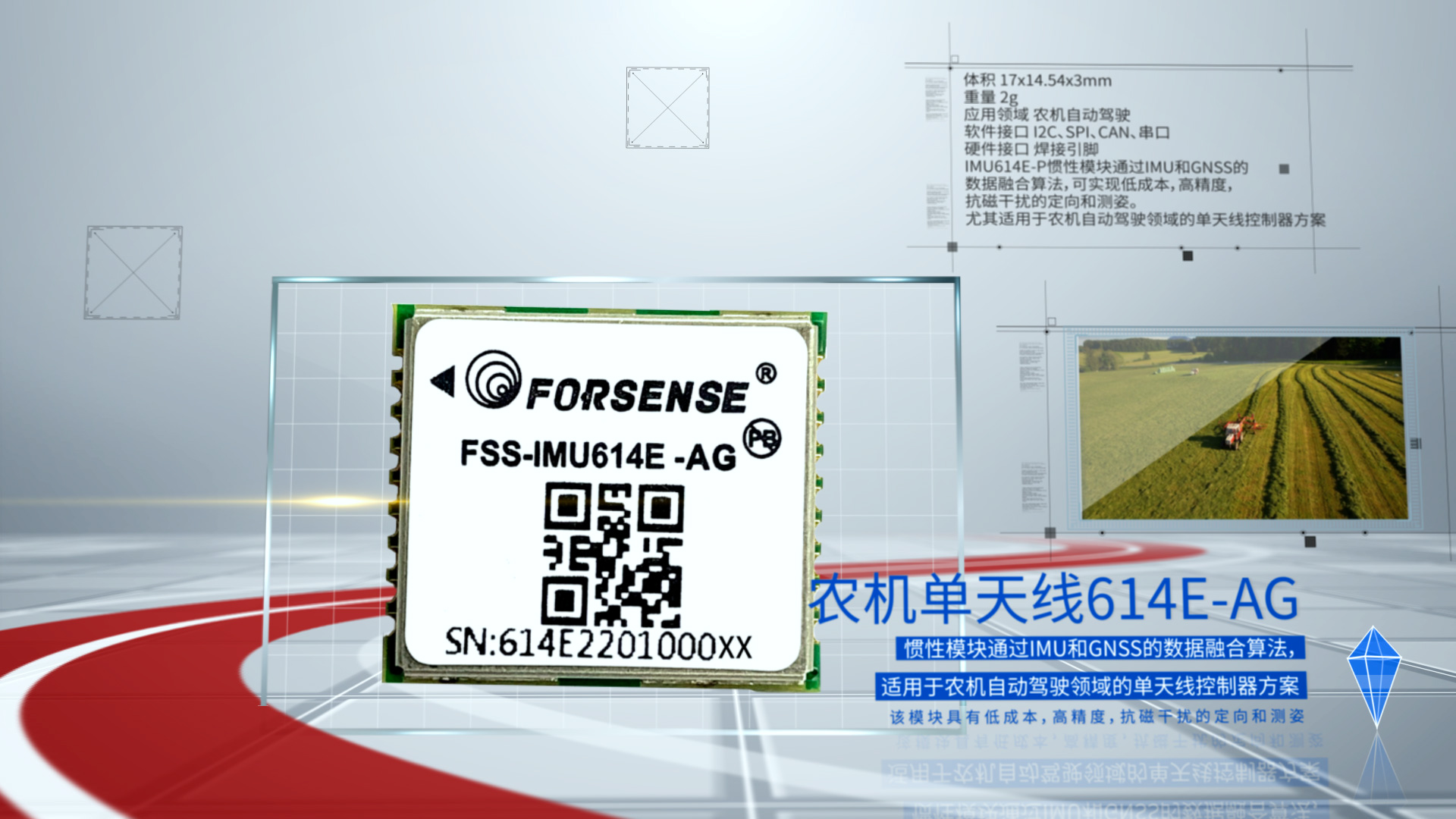Pain Points of Chinese Agriculture and the Application of Inertial Sensors in Smart Agriculture
Pain Points of Chinese Agriculture and the Application of Inertial Sensors in Smart Agriculture
Currently, China’s urbanization rate is constantly increasing and reached 63.89% in 2020. According to relevant organizations, it is estimated to reach 75% to 80% by 2035. However, this trend also brings a serious problem: a shortage of agricultural labor force.
To solve this problem, the combination of autonomous driving technology and agriculture has become a highly concerned topic. Autonomous driving technology in agricultural machinery not only can alleviate the shortage of labor force and improve labor productivity, but also can upgrade agriculture to a smart level, becoming one of the effective means to solve current agricultural pain points.

The development of smart agriculture is crucial for solving the global food problem.
The smart agriculture market is a market with high demand and rapid technological development. It is estimated that the global total output value of smart agriculture will reach $68.389 billion by 2025. In China, the demand for modern agricultural machinery continues to increase, and new technologies are continuously developed and applied, which will promote the continuous high-speed growth of the smart agriculture market. In2021, the size of China’s smart agriculture market was about 68.5 billion yuan, and it is expected to further grow to 74.3 billion yuan by 2022, a year-on-year growth rate of 8.5%.
According to the United Nations’ forecast, the global population will increase by 2 billion by2050, and agricultural productivity needs to increase by 60% to provide sufficient food. Future global expenditure on networked intelligent agricultural technology and systems will significantly increase.
Autonomous driving of agricultural machinery has become an important means for China to solve agricultural production problems.
The autonomous driving of agricultural machinery has become an important component of China’s smart agriculture. The autonomous driving of agricultural machinery uses the BeiDou satellite navigation technology, and precise fertilization, pesticide application, planting, and harvesting are carried out using modern machinery and monitoring systems. Realtime location information is provided to minimize the impact of night and heavy fog on the operating time of agricultural machinery in the fields. This not only reduces the input cost but also increases crop yield and quality, and greatly liberates labor force by freeing drivers from heavy operations, thus improving the economic benefits of agricultural producers, farms, agricultural machinery cooperatives, and farmers.

As of 2021, more than 65,000 sets of domestic BeiDou autonomous driving systems have been deployed, while the estimated number of large and mediumsized agricultural tractors in China is more than 4.6 million with a penetration rate of only 1.4%. It is expected that the penetration rate of China’s agricultural autonomous driving system will reach about20% by around 2035. Autonomous driving technology applied to agricultural production can greatly improve the refinement level. Automatic driving reaches the predetermined goal by setting a route and data to achieve scientific and sustainable agricultural production.
The use of unmanned driving agricultural machinery is an inevitable trend in the future. From mechanization to unmanned, farmers are freed from heavy physical labor, greatly improving work efficiency. The progress of autonomous driving of agricultural machinery not only brings efficient production operations to farmers but also gradually changes their way of life. More and more intelligent agricultural machinery will be used in agricultural production, which will free up labor force and improve work efficiency and quality, further aiding the digital transformation of agriculture.
The application of inertial sensors in smart agriculture.
Inertial sensors/IMUs can measure parameters such as the threeaxis acceleration and angular velocity of agricultural machinery to provide accurate attitude measurement data, helping agricultural machinery achieve autonomous navigation and intelligent decision-making.
Specifically, inertial sensors can realtime monitor the tilt, swing, and heading status of agricultural machinery during operation and provide this information to the autonomous driving system. The system can make intelligent decisions based on realtime road surface conditions and machine status, adjust parameters such as speed, trajectory, and working depth of the agricultural machinery, and achieve high efficiency, precision, and quality agricultural operations.
For example, during tilling operations, inertial sensors can help agricultural machinery achieve precise control, ensure the depth and uniformity of tilling, and avoid unnecessary damage to the land. In harvesting, inertial sensors can help agricultural machinery achieve stable driving and harvesting, improving work efficiency and quality.

FORSENSE dedicated sensor fusion algorithm for the agricultural industry:
FORSENSE selfdeveloped dedicated sensor fusion algorithm for the agricultural industry can use the data provided by inertial sensors and deep fuse with GNSS navigation information to calculate the current position and attitude of the agricultural machinery, significantly reducing the difficulty of developing autonomous driving systems for agricultural machinery and improving the accuracy of autonomous driving. In many years of market practice, it has received unanimous praise from customers and quickly occupied the subdivision market.
In conclusion, the application of agricultural automation technology is an inevitable trend, and it is crucial in improving agricultural productivity, alleviating population aging and labor shortages, and solving global food problems. Inertial sensors, as an important component of this process, can provide accurate attitude measurement data for autonomous driving agricultural machinery, accelerating the digital transformation of agriculture. In the future, with the continuous development of technology and market, the application of autonomous driving agricultural machinery, inertial sensors, and other related technologies will become more popular and mature, becoming a powerful support for China’s agricultural development.
